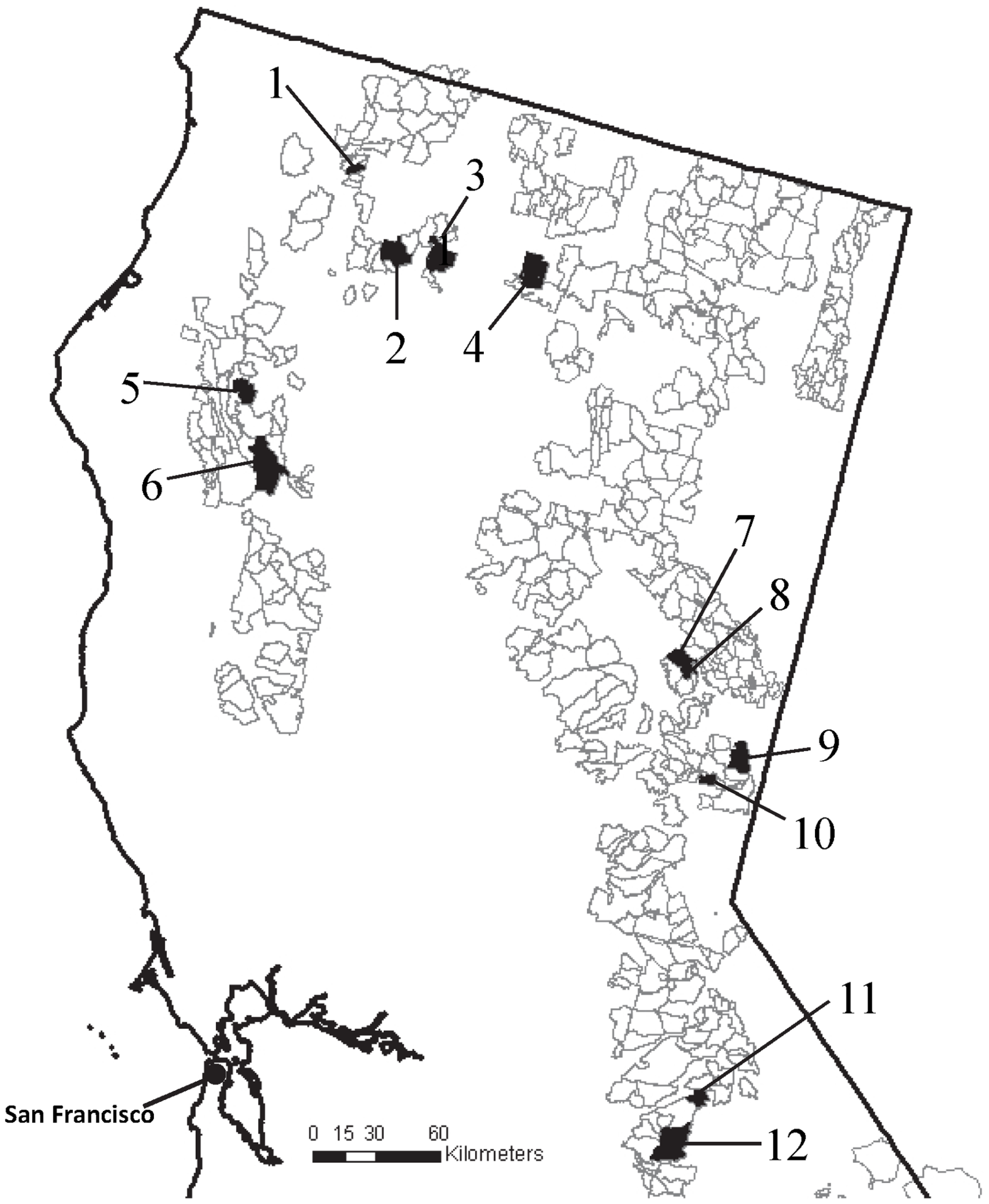Grazing allotments on U.S. Forest Service (USFS) lands provide summer forage for cattle, surface water for public recreations and consumption, and critical aquatic habitat. There is substantial concern that public lands cattle grazing degrades water quality, threatening human and ecological health. Given the importance of clean water on multiple-use landscapes, additional research is required to document water quality conditions, and to examine water quality conditions across resource use activities and environmental conditions. Objectives
- Quantify fecal coliform, E. coli, total nitrogen, nitrate, ammonium, total phosphorus, and soluble-reactive phosphorus concentrations in surface waters.
- Compare results to a) regulatory benchmarks, b) recommended benchmarks for eutrophication concerns, and c) estimates of nutrient background concentrations.
- Examine relationships between water quality, environmental conditions, cattle grazing, and recreation.


The 12 U.S. Forest Service grazing allotments (shaded polygons) in northern California enrolled in the cross-sectional longitudinal study of stream water quality between June and November 2011
Methods In collaboration with multiple stakeholder groups, we conducted a cross sectional survey of water quality conditions associated with cattle grazing and recreation on 12 USFS public lands grazing allotments in northern California. We collected a total of 743 water samples from 155 stream collection sites. We sampled each stream collection site monthly during the study period (Jun 1 - Nov 9, 2011). Stream conditions were noted at the time of sampling. Parameters measured were fecal coliform, E. coli, total nitrogen, nitrate, ammonium, total phosphorus, and soluble-reactive phosphorus concentrations.
